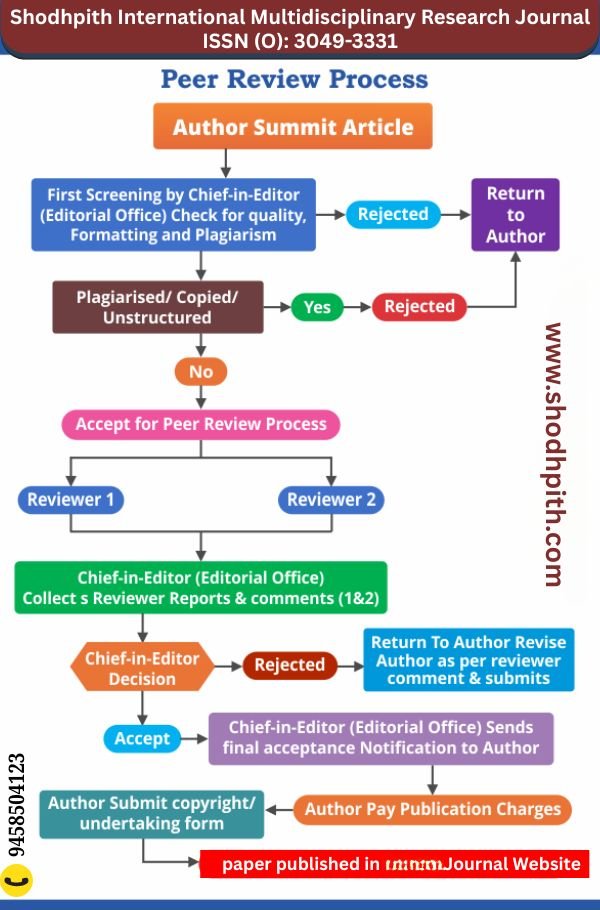Shodhpith International Multidisciplinary Research Journal (SIMRJ) is the leading high quality International open access, peer-reviewed and refereed, following the UGC Journal Norms and Guidelines, multidisciplinary, Multilanguage and Bimonthly published online research journal.
Peer review is the most important quality control measure for any academic journal. This process involves an analysis of the scholarly work from each perspective, including writing, technical content, documentation and its impact on or relevance to the discipline by Subject experts in the relevant fields.
First of all, the research paper is examined by our editorial board. The editor's office first checks each manuscript for plagiarism. After going through this process, articles that are found suitable for review are sent to two related subject experts in the area of the research paper. If any kind of correction is required then it is sent back to the author for correction. Acceptance or rejection notification will be sent to all authors through e-mail within 2-7 days after submitting paper. Accepted paper will be published within 2-7 days after submitting all necessary documents.



